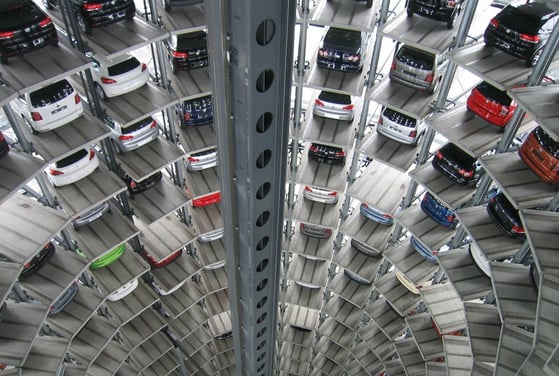Back to articles
Bluetooth Mesh for Industrial IoT

Bluetooth Mesh lays a framework for large-scale industrial deployments using technology that is already secure, reliable, and supported by all smartphones.
The Bluetooth Mesh standard sits on top of Bluetooth as a way of creating a mesh network. Rather than have each device on the network communicate with a central hub, in a mesh network, each device can communicate with any of the other devices around it as long as they are within range.
Read more: Mesh networks explained
Bluetooth Mesh brings two major benefits. The range of the network is increased – rather than each device needing to be within 20-30 meters of a network hub, each device now only needs to be within 20-30 meters of another device. The resilience of the network is also increased – there’s no single point of failure so if one node goes down, data can route around it and get through.
Check out our resource page for more information: Industrial IoT
Future-proofing the factory
One of the major beneficiaries of Bluetooth Mesh is the lighting industry. Lighting is the obvious candidate to form the backbone of a mesh network. It’s always there and it’s connected to the mains so there are no issues with availability or power.
Read more: Bluetooth mesh in lighting: What comes next?
Many manufacturers of connected lighting have had to develop their own proprietary standards, or adopt different technologies, to implement mesh networking. While this has allowed large-scale deployments to take place already, this comes at the cost of interoperability
Bluetooth Mesh reduces this problem by laying a framework that allows everything to work together, using Bluetooth technology that is already secure, reliable and supported by all smartphones. Best of all, it allows everything to be connected because you know there will be a connection available everywhere.
Smart warehousing solutions
The Industrial Internet of Things (IIoT) is at the cutting edge of smart, connected technology. Savings of time and money are great but convincing a consumer that spending $10 to save $20 over the lifetime of a product is much more difficult than convincing a company to spend $100,000 to save $200,000.
Warehousing is one sector where IIoT can make tremendous gains for companies. For example, a mesh network makes it much easier to use beacons to track assets so that you know exactly where your equipment is and whether it’s being used.
Going one step further, if your machinery is also connected then it can also report back, in real time, data on how it is performing so that predictive maintenance can solve problems before they become failures.
A mesh network gives much greater control over the environment. You can attach, for example, humidity sensors to every product – very important when handling highly-sensitive materials – and connect to the HVAC system to ensure that all products are stored in exactly the right conditions.
Small gains such as this are only the start. With mesh networking, warehousing can be made much more efficient.
The fully automated warehouse is already here
With a fully-automated, connected warehouse, you can eliminate dead space completely. A vertical stacking system, operated by robots, removes the need to provide space for human beings to walk around picking or loading items into place.
One system, AutoStore, does exactly this. The company has implemented automated warehousing solutions for companies such as Lufthansa and Puma and estimate they can reduce warehouse space by up to 75% in most cases.
The system is fully connected. Robots pick the goods from vertically stacked bins and everything can be monitored in real time. They know when it’s time to go and put themselves on charge, they can tell you if they need maintenance. What’s more, they know exactly where everything is so they can deliver goods much more quickly and efficiently than humans.
Automation on this scale not only reduces costs but also increases safety. If you remove humans from the dangerous work environment of a warehouse then the number of industrial accidents will plummet.
The future of Bluetooth Mesh
Now that Bluetooth has introduced the Mesh standard, the great benefits of mesh networking are finally available for mass deployment.
The original Bluetooth Mesh 1.0 release back in 2017 was followed by an update 1.0.1 version in January 2019. Being a minor update, this did not bring any major new features, but focused mostly on readability issues and typos in the specification document to make it more accessible.
This does not mean that the momentum for mesh is dropping though, and the mesh working group within the Bluetooth SIG is working hard on future updates to the mesh specification to ensure Bluetooth mesh can live up to its full potential.
Mesh networks have the power to revolutionize IoT in both industry and the home bringing the reality of a smart, connected future one huge step closer.
This is an updated version of an article published January 2018


